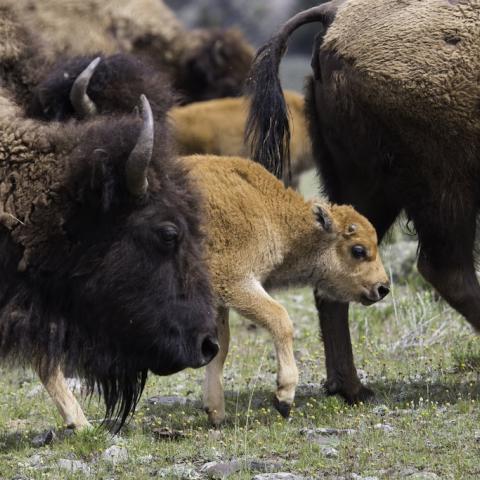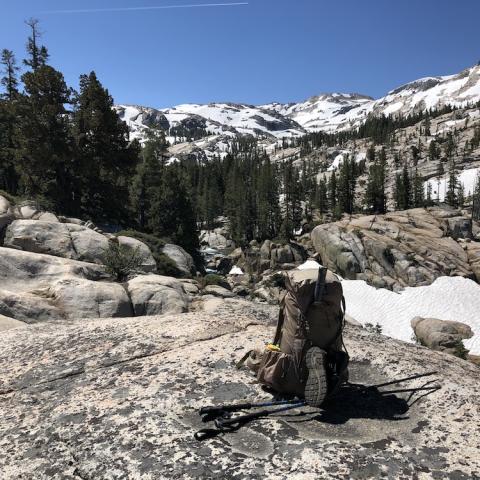
What happened to your color, Morning Glory?/Rebecca Latson file
Editor's note: Yellowstone Caldera Chronicles is a weekly column written by scientists and collaborators of the Yellowstone Volcano Observatory. This week's contribution is from Annie Carlson, research coordinator at the Yellowstone Center for Resources, Yellowstone National Park.
Yellowstone National Park's Upper Geyser Basin is one of the truly unique places on Earth. It contains the world's highest concentration of geysers, including Old Faithful, and several remarkable hot springs. One the most famous is Morning Glory Pool, which is accessible at the end of an easy 1.5-mile trail from the Old Faithful Visitor Center. But years ago, you could drive a car right up to its edge.
Until 1972, the old Yellowstone park road ran right through the heart of the Upper Geyser Basin, from Morning Glory Pool to Old Faithful Geyser. Every year, thousands of cars would roll past these wonders. Although it provided convenient access to major thermal features, the road was ultimately deemed too damaging and dangerous, and it was moved to the outskirts of the basin. There were lasting impacts from this old road, however, that we can still see today at Morning Glory.
Morning Glory Pool was named in the 1880s for its resemblance to the blue flower. Historic photos reveal the intensity of the deep blue color of the hot spring. But if you go to the pool today, you will see that the hues are quite different, with more oranges, yellows and greens. While thermal features naturally undergo changes, we have reason to believe that this color change to Morning Glory was not entirely natural. The convenience of the old road allowed easy access to the spring not only for people, but also their trash. For many decades, visitors regularly threw garbage, coins, and rocks into the hot spring, which earned the nickname the "garbage can" in the 1950s. The trash settled along the base of the vent, restricting the flow of hot water into the pool.

Back in 1975 rangers worked to clean the trash that had been tossed into Morning Glory/NPS file
As the hot water from the vent was slowly blocked, it lowered the overall temperature of the spring. Water temperature is one of the major factors that determines where different species of thermophiles can thrive. Some of these microscopic organisms live in communities of billions of living cells that we collectively refer to as microbial mats. Yellowstone hosts a variety of microbial mats with different colors and textures. In the hottest water temperatures, many thermophilic species cannot survive, and the hot spring appears a clear blue color based on the way that the water absorbs and scatters light.
As water temperatures cool, microbial mats often grow along the edges of hot springs with the orange and yellow hues now seen in Morning Glory Pool. Rangers were so concerned about the human impacts to Morning Glory's color that in the 1970s they partially drained the hot spring and attempted to remove as much trash as possible. But their efforts couldn't reverse the change.
The rare eruption of Ear Spring in 2018 provided a good example of how trash thrown into a hot spring can persist for decades. There is a chance that Morning Glory Pool will not ever appear in its clear blue state again. Time will tell. In the meantime, if you visit the park, never throw any object into a thermal feature. Help us protect these remarkable resources for future visitors to enjoy!





 Support Essential Coverage of Essential Places
Support Essential Coverage of Essential Places







Comments
It's only stupid people who would throw anything into the morning glory hole. They did not consider the conseq of their actions, this has taken away so much for new visito to experience.
I loved that when I saw it as a teenager in 1952...it was such a gorgeous blue!!!